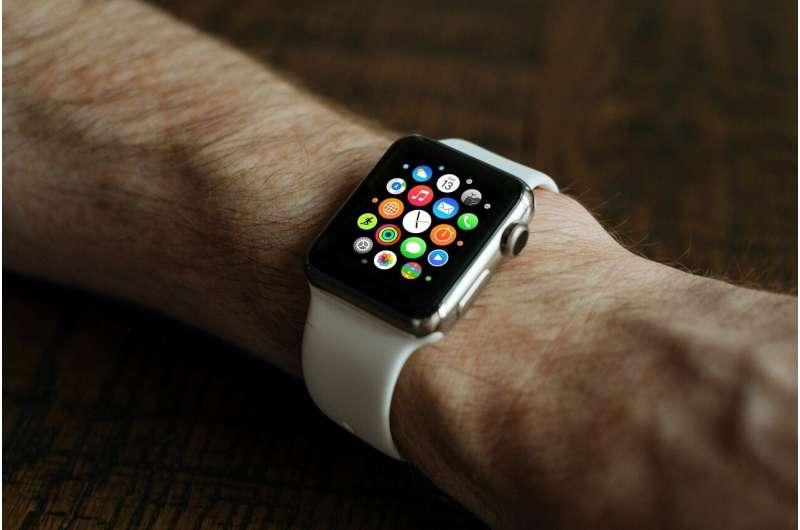Credit: CC0 Public Domain
A team of researchers at the Icahn School of Medicine at Mount Sinai has found evidence that suggests smart watches can detect COVID-19 symptoms before a person has become aware that they are infected. On their website, the team at Mount Sinai describes testing 297 healthcare workers by looking at data from their Apple Watches.
One of the early signs of a COVID-19 infection is inflammation in infected areas of the body. And when inflammation begins, the body responds by slightly altering blood flow. That change in blood flow can be seen in slight changes to a person's heartbeat, detectable via smart watches like the one from Apple. By noting a person's heartbeat over long periods of time, a smart watch can determine a normal baseline for the person wearing the watch. And when a sudden prolonged change happens, such as sustained heart rate variability, the device can detect that, too. In the test at Mount Sinai, the volunteers were asked to wear the smart watch full-time and also to install a watch app that specifically looked for sustained changes in their heartbeat. The researchers found that the watches were able to identify two-thirds of those people who were infected an average of seven days before the volunteers noticed any symptoms.
CBS News recently looked into the findings by the team at Mount Sinai and those of another study at Stanford University, as well as other companies investigating whether their smart watches could work similarly. They found that for the most part, the answer was yes, smart watches can very often detect a COVID-19 infection up to a week before the onset of symptoms. They further noted that engineers can make apps for the smart watches to alert the user, who could then self-quarantine until tested. And that, they further note, could very well slow the spread of the current pandemic and those that may occur in the future.
More information: www.medrxiv.org/content/10.110 … 020.11.06.20226803v1 Robert P. Hirten et al. Longitudinal Physiological Data from a Wearable Device Identifies SARS-CoV-2 Infection and Symptoms and Predicts COVID-19 Diagnosis, medRxiv (2020). DOI: 10.1101/2020.11.06.20226803
© 2021 Science X Network























